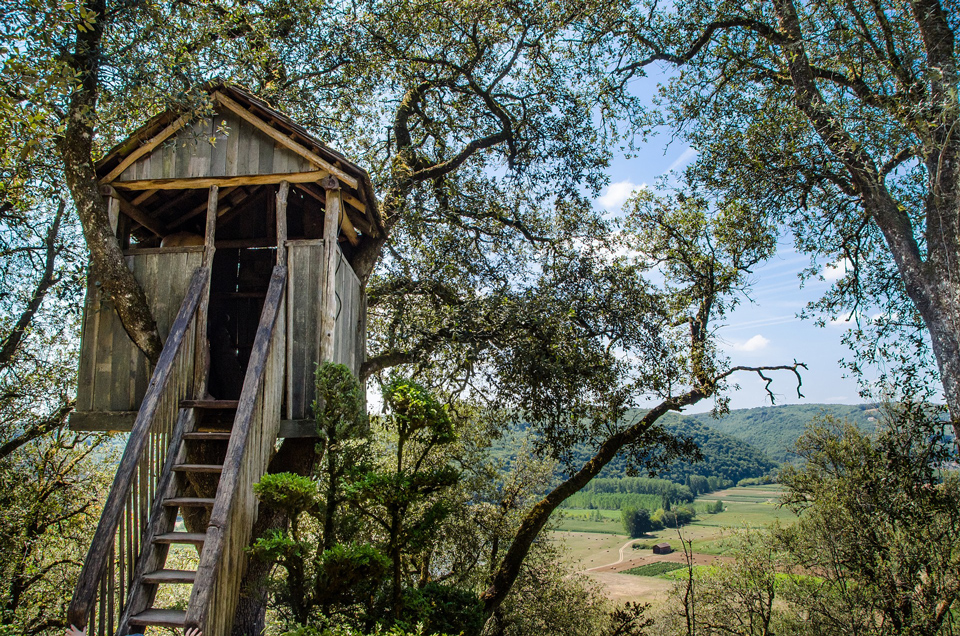As the weather gets warmer and the school holidays progress, take advantage of the weather and free time. Here are some games that high learning potential children may enjoy in their own back gardens, even if the space you have to play in is small.
Hunts and Chases
Easter being the classic time for hunts, why not try out one or two of these ideas for a twist on the usual. If your kids are anything like mine, once they’ve experienced them they’ll spend time creating similar (but different) hunts for you to ‘enjoy’!
Magpie
Make a list of 10 things you are likely to find in your garden or on your daily exercise, such as a brown leaf, a daisy or a snail shell. It is probably best to have some that are easy to find and some that are more difficult. Each person playing needs a copy of the list – you could get them to write them down or draw pictures. Set a time limit and then race to find as many of the things on the list as possible (have a bag to put them in for proof). The winner is the first to collect all the things on the list (if this happens the winner should be encouraged to help the others). If nobody collects all of them, the one who has collected most by the time limit is the winner. For an Easter theme, hide some mini eggs in advance and add them to the list!
Picture Trail
Hide the ‘treasure’ (a small prize or Easter egg). Draw a picture that gives a clue to where the treasure is. To make it more tricky, draw a picture that is not directly of the place but of something to do with the place it is hidden (for example, draw a leaf or acorn if it is hidden behind a tree, clothing or washing powder pack if it is in the washing machine). Hide this picture in another place then draw a picture for the second hiding place. Hide this too and carry on in the same vein until you have a whole trail of hidden clues. Give the last piece of paper to the hunter and set them on their way.
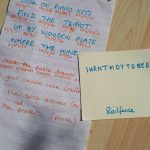
Cipher Trail
Like the trail above, but this time instead of pictures, create clues to the hiding places in ciphers. You can make this as complex as you wish by using ciphers that are more difficult to decode, such as polygraphic or transposition ciphers, or using a variety of ciphers in the same hunt. An easy one to start with is pig pen cipher and here is a handy online pig pen conversion tool. There are many more ciphers to discover here.
Flying Things
Perfect for indoors or out, getting things flying offers a level of activity and excitement without leaving your own home.
Paper Aeroplanes
Have fun creating paper aeroplanes that fly fast and far. The trick is to have both an excellent design and good execution. Try The Eagle and High Glider for great designs. Here are a few others to try. Once you’ve got the hang of folding them, get your child to teach someone else. This is important to develop their confidence and can be done by video chat if there is no one else in your household to teach. When you’ve got a good method that seems to fly well, have fun decorating it or adapting it to see what adjustments work. Once you are happy with designs, take your planes outside to test them. Measure how long they stay in the air and how far they travel. You can even give scores for loops!
Make a helicopter flyer by taking a strip of paper or card (approx. 5cm x 15cm). Cut lengthways halfway down the piece of paper or card and fold the two halves in opposite directions. Add a weight to the bottom – a paperclip will suffice for paper, a small bulldog clip for card. Throw as high as you can and watch it spin as it comes down. To upgrade, follow these instructions to make an egg carton helicopter!
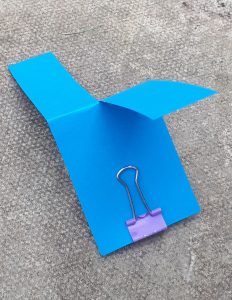
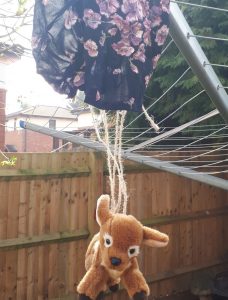
Cuddly Toy Parachute
Cut two 1m pieces of string, then tie the middles together. On each of the four ends make a slip-knot. Take an elastic band (or hairband) and pull two of the four slip-knotted ends through the elastic band so it hangs loosely around the middle knot. Take a square scarf or handkerchief made of silk or cotton and tie knots in each of the four corners. Put the slip-knotted ends of the strings over the knots in the scarf and pull the slip-knots to tighten. Strap the elastic band around your chosen cuddly toy and tuck under the arms. Throw up as high as you can and watch your toy enjoy its floaty descent. For an Easter theme, a cuddly lamb, chick or bunny would be eggciting!
Fun with Sticks
Especially good if you have access to bamboo poles or have collected sticks on outings, here is a selection of ideas for using them in the garden.
Skittles
Take a tennis ball and wrap it in a handkerchief or sock then tie a piece of string to the top of the parcel and tie the other end of the string to an overhanging branch. Try swinging it as a pendulum to see how far it reaches. Then gently push 9 bamboo sticks into the ground within this area so they are easy to knock over. Check that the ball can swing out past the furthest stick. Have fun swinging the ball to knock over as many sticks as possible in 2 attempts. Score a point for every stick knocked over and 15 points if you get them all in one swing!
Dinosaur Egg Explorer
Have a pile of dinosaur eggs (medium sized stones) and a nest (bucket) for each player. Each explorer holds a 1m long bamboo pole in each hand and, gently, using them like giant chopsticks, tries to pick up the dinosaur eggs and put them into their nest. You could either race to get the same number of eggs into your nests, or set a time limit and see how many eggs each person gets into their nest in that time. Once they are all in the nests, try moving them back out again!
Blindfold Funambulism
Lay a bamboo pole or skipping rope on the ground. Find a scarf to put at the start. Players need to put the scarf on as a blindfold and try to walk along the ‘tightrope’. When they are proficient at this, try doing it carrying a stick with a sandcastle bucket filled with water on each end!
Did you know?
A long pole has a large moment of inertia about an axis along the rope. An unbalanced torque will then produce only a small angular acceleration of the performer-pole system, to extend the time available for getting back in balance. To keep the centre of mass above the rope, the performer can shift the pole left or right, instead of having to bend his body around. Also, a pole may sag down at the ends to lower the system’s centre of gravity, increasing the relative stability of the system.
Daring Obstacle Courses
Using whatever you have lying around to create obstacle courses can be great fun for children to be involved in. Children often have the best ideas and then enjoy being timed and trying to beat their own or their siblings’ and parents’ times.
Turtle Backs
See what you can find that would make good stepping stones (or turtle backs) to jump between. This could be hula hoops, hoopla rings, inflatable swimming rings, or even pieces of card. Arrange them so that jumping between them is challenging but achievable.
Canyon Crossing
Put down two pieces of wood, bamboo sticks or skipping ropes in parallel to balance along. To make it more tricky, balance along just 1 instead. You could also roll a large towel along the long edge into a tube and walk along that.
Alarming Maze
Push 6 -8 bamboo poles or sticks into the group and cover the tops with upside-down yoghurt pots (for safety). Tie wool or string tightly between the upper parts of the poles/sticks in a web pattern. Fill some tins, yogurt pots or plastic bottles with dried beans, lentils or small pebbles and tie them at intervals to the wool/string so that they hang down. Players need to crawl through the maze of objects without making any of the pots rattle!
Noodle Hurdle
If you have any pool noodles at home, bend these and stand them on their ends to make a raised arch to create hurdles to jump over. Alternatively, use small plastic storage boxes, cardboard boxes or a pile of cushions.
Ominous Cave Crawl
Place large stones along two parallel edges of an old sheet, blanket or tarpaulin to make a tunnel to crawl through.
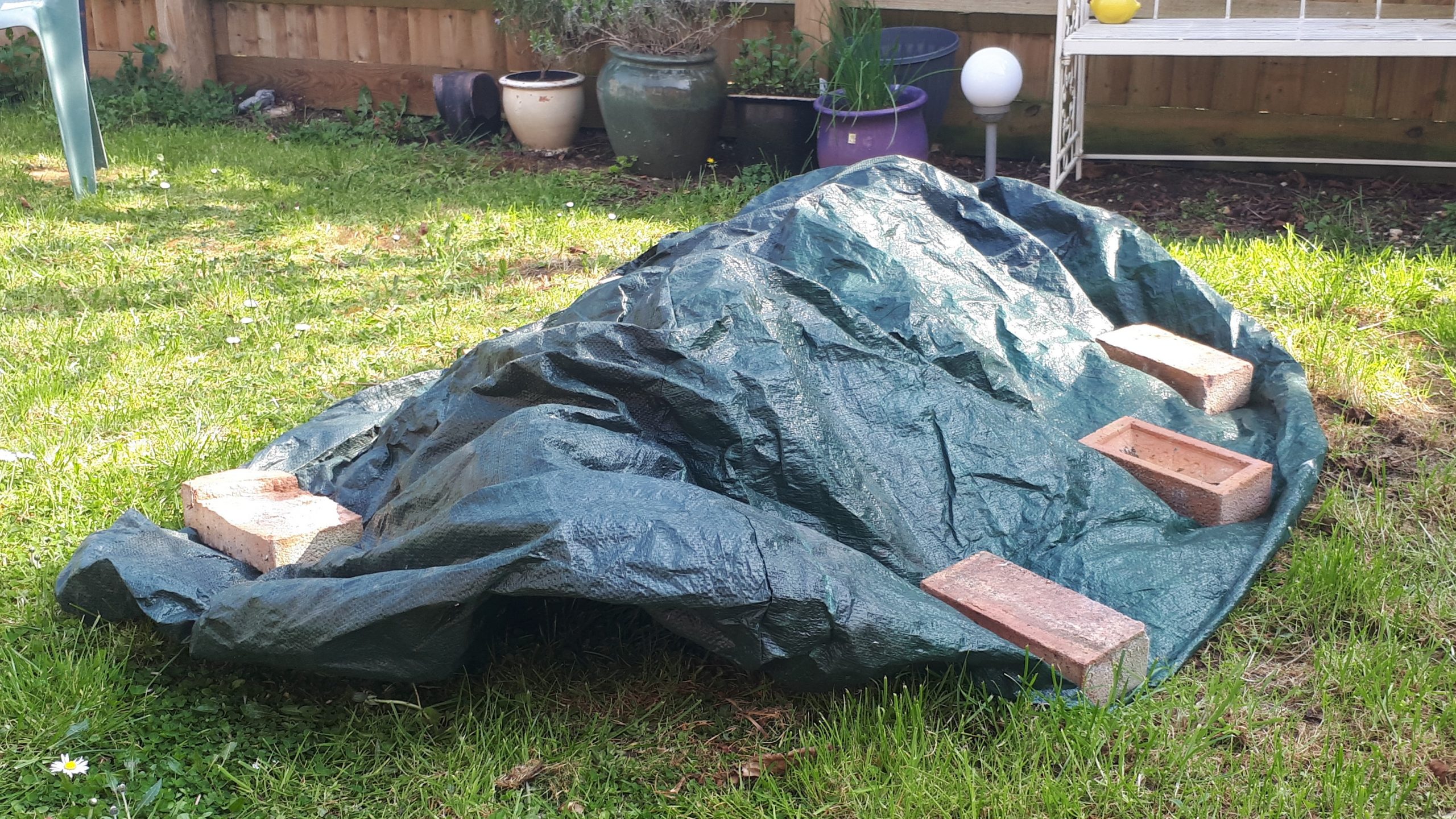
Thrilling Fence
Place a bamboo pole between two chairs to crawl under or hop over. Adjust the height by hanging a loop of string on each end of the pole and hooking the other end of the loop over the chairs.
Slalom Sabotage
Push bamboo poles or sticks into the ground in a zigzag pattern (two parallel zigzag lines) and balance erasers or small toys (rubber ducks are good!) on the end of them. Players need to crawl between them without knocking the erasers/toys off.
Branch Walking
Find a portable mirror and place it under a tree. When players get to the mirror, they hold it horizontally beneath a tree branch, look down into the mirror so that they can see the branch reflected back at them and try to ‘walk’ along it.
Dens and Camps
When you can’t leave home, a den or a camp in the garden can provide hours of fun and some much-needed space that can be used for reading, eating lunch or playing dens in. Try one or more of our ideas here.
Homemade Tepee
Take 5 one-metre long bamboo poles and a large elastic band. Hold the poles together in a bunch and wrap the elastic band around the top of them. Spread out the bottom of the poles to create a cone shape. Drape or wrap a double sheet over the frame and tie it to the top with string. Use the sheet folded back at the corner as an entrance to the tepee.
Quick Tent
If you have a washing line across your garden, lower it so the middle is quite low. Put a large sheet or tarpaulin over and adjust the line so that around 40cm of sheet/tarpaulin is on the ground at each side. Pull the sheet/tarpaulin out at the sides and hold the edges down with large stones.
Cardboard Fort
If you have cardboard boxes to spare, use them to create a fortress. Place them so that they are double height and secure with parcel tape and go around to create a fort. Defend from invaders! What time period is your fort from? What armour would have been worn then? How would it have been defended? Can you make improvements?
Icy Igloo
Lay a large sheet on the ground under a lowered washing line (this can work with a sturdy rotary dryer too). Pick up the sheet by the middle and tie around the washing line. Pull out the sheet corners and hold the edges down with large stones or earth-filled bags. Open the base and top flaps of a cardboard box and push the box into one side of the igloo. The flaps will act as doors to the igloo.


